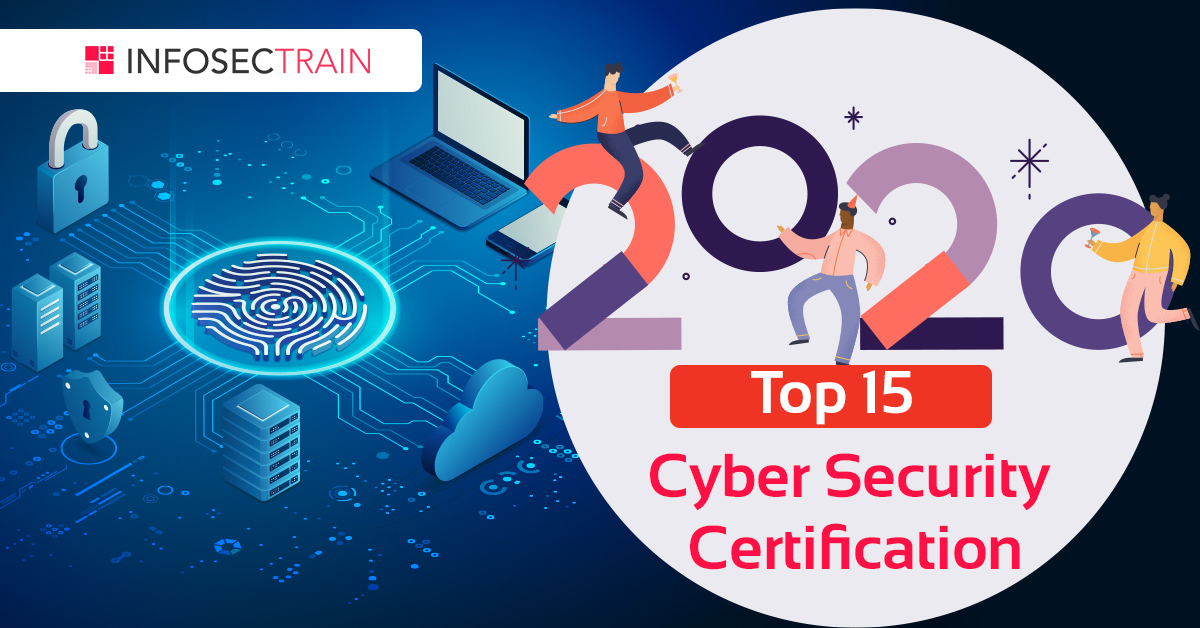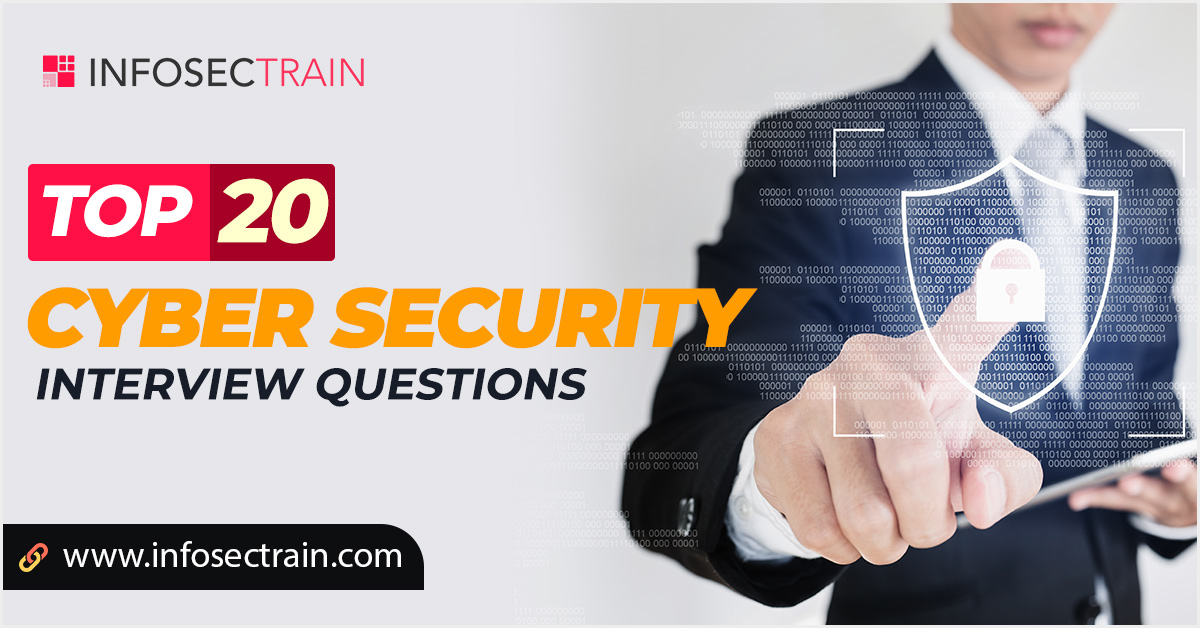Top 20 Cybersecurity Interview Questions
Preparing for a cybersecurity interview? Here’re the top cybersecurity interview questions with answers that will make you ready for the interview!
We live in a ‘digital’ world now! We could connect to an infinite source of information with a single click on smartphones or computers. At the same time, users are also generating, processing, and storing massive volumes of data throughout the web. As a result, the threats to information stored on user systems are also becoming more prominent with every passing day.
So, the opportunities for a career in cybersecurity are becoming increasingly evident in recent times. Candidates with promising command over abilities to answer cybersecurity interview questions can secure lucrative jobs in cybersecurity. Here is an outline of the common cybersecurity interview questions and answers to help you start your preparations.
Enroll Now: Cybersecurity Training Course
Top Cybersecurity Interview Questions
In your cybersecurity interview you may come across different type of questions that the interviewer ask to check your knowledge and understanding of the concepts. So, to get ready for the interview, don’t miss to check out the following cybersecurity interview questions.
- What is cryptography?
Cryptography is the study and practice of techniques for safeguarding information and communication to ensure protection of data from unauthorized third parties.
- What is the CIA triad?
The CIA triad is a model tailored specifically for guiding important policies on information security. The three important pillars of the CIA triad are Confidentiality, Integrity, and Availability.
- What is the difference between IDS and IPS?
The IDS or Intrusion Detection System is only capable of detecting intrusions, and the administrator has to take remedial measures for preventing intrusions. On the other hand, IPS or Intrusion Prevention System detects the intrusion alongside taking necessary measures for preventing the intrusion.
- What is the difference between encryption and hashing?
Encryption and hashing can help in conversion of readable data into unreadable formats. However, the difference between these two techniques is that encrypted data can return back original data through decryption. On the other hand, hashed data could not be converted back to the original data.
- What is the difference between Penetration Testing and Vulnerability Assessment?
Penetration testing is the process involving identification of vulnerabilities in the target system. This type of testing involves checking for any method for hacking the system or network with all security measures in place. Vulnerability testing is the identification of flaws in the target system. It is applicable in cases where organizations are aware of flaws or weaknesses in their systems or networks. Vulnerability testing helps in identification of the flaws and prioritizing them for resolving.
- What are the important elements in cybersecurity?
The important elements in cybersecurity are information security, application security, network security, operational security, and business continuity planning, and end-user education.
- What is a firewall?
A firewall is a security system designed for a network. It is established on the boundaries of a system or network and helps in monitoring and controlling network traffic. Firewalls help in safeguarding systems or networks from worms, viruses, and malware. In addition, they also prevent remote access and content filtering.
- Define Traceroute
Traceroute is basically a tool that showcases the packet path. It contains all the points through which a packet passes. Traceroute is ideal in situations when the packet is incapable of reaching the destination. In addition, Traceroute can also check the points where a connection breaks or stops, for identifying failures.
- What is SSL?
SSL is the abbreviation for Secure Sockets Layer. SSL is a technology that helps in developing encrypted connections between a web browser and a web server. It is highly crucial for safeguarding information in online transactions and digital payments for maintaining data privacy.
- What is a brute-force attack?
A brute-force attack is basically a trial-and-error method for finding out the right Personal Identification Number (PIN) or password for a system or network.
Latest Cybersecurity Interview Questions
With the passage of time, there are always some new updates in the technology. As per that you may come across some new questions in your interview. So, to make you confident enough, we’ve added the following latest cybersecurity interview questions.
- What are the different layers in the OSI model?
The different layers in the OSI model include physical layer, data link layer, network layer, transport layer, session layer, presentation layer, and application layer.
- Define VPN.
A VPN or Virtual Private Network is a network connection method that enables a highly secure and encrypted connection. VPN is ideal for safeguarding data from censorship, interference, and snooping.
- What is a MITM attack?
A MITM attack or Man-in-the-Middle attack happens when the attacker is capable of intercepting communication between two individuals. The primary objective of MITM attacks is to compromise confidential information.
- What is TFA?
TFA or Two Factor Authentication is a security mechanism for identifying an individual accessing a specific online account. Users can get access only after they present evidence to the authentication device.
- Define WAF
WAF or Web Application Firewall is a mechanism for safeguarding applications through filtering and monitoring the incoming and outgoing traffic between the internet and the web application.
- What is network sniffing?
Network sniffing is the practice of using certain tools for analysis of data packets sent over a network. Specialized sniffing tools such as software programs and hardware equipment can help in monitoring data packages over a network, capturing sensitive data, and eavesdropping on chat messages.
- What is a TCP three-way handshake?
A TCP three-way handshake is a process used in a network for making connections between a local host and server. The client and server must negotiate synchronization and acknowledgment packets for a TCP three-way handshake before they start communication.
- What is data exfiltration?
Data exfiltration is the process of unauthorized data transfer from a computer system. The transmission in data exfiltration could be manual, and any individual with physical access to a computer can do it.
- What are the common cyber-attacks?
The common cyber attacks include phishing, malware, DDoS Attacks, password attacks, rogue software, and Man-in-the-Middle attacks.
- What is social engineering?
Social engineering is the practice of convincing people to reveal sensitive information. The three common types of social engineering attacks include computer-based, human-based, and mobile-based attacks.

Conclusion
Enterprises are focusing more on cybersecurity today than ever. Therefore, expert cybersecurity professionals are the need of the hour, especially with the emerging complexities of cyber threats. The questions mentioned above can help you start your cybersecurity interview preparation immediately. At the same time, it is also important to note that there are many other cybersecurity interview questions.
With a clear career objective in mind, candidates could use cybersecurity interview questions to gain confidence for actual interviews. Furthermore, the cybersecurity interview questions can help candidates test their capability for retaining information about cybersecurity they learn in training. Take the first step towards a promising career in cybersecurity by exploring more advanced cybersecurity interview questions right now.
Before sitting in the interview, it is always recommended to validate your skills with a certification. So, if you’re thinking to get a cybersecurity certification, check out our Cybersecurity Training Course that will prepare you for the certification exam. Thus, it would help you to make a promising career in the cybersecurity.







 1800-843-7890 (India)
1800-843-7890 (India)